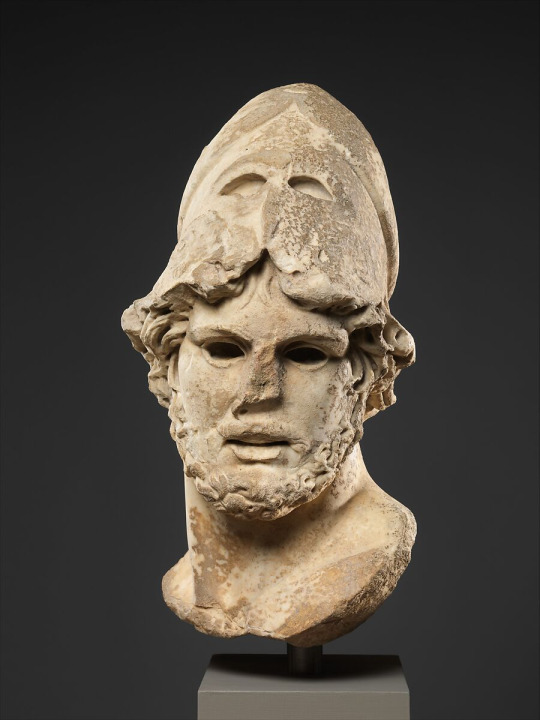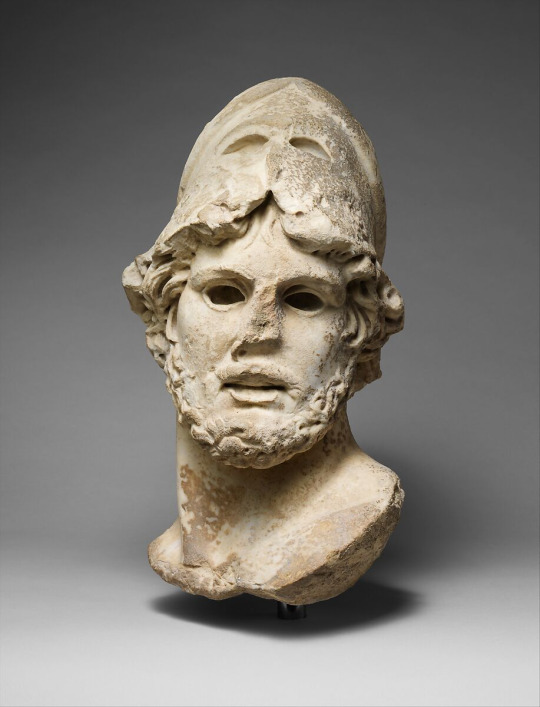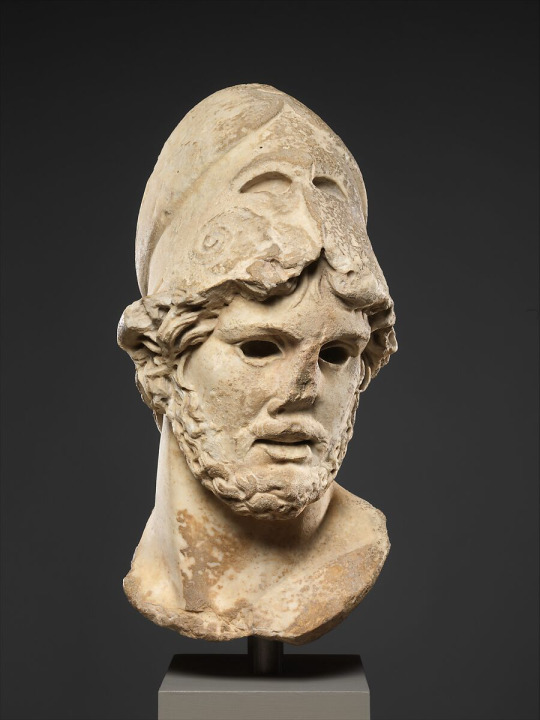#Representational State Transfer (REST)
Explore tagged Tumblr posts
Text
Best Practices in Designing an Effective API
Designing well-established Interfaces There is no software system in isolation. Software systems communicate with each other to request or response to some data. This is also called interoperability. Interoperability is the degree to which two or more systems can usefully exchange meaningful information via interfaces in a particular context. Software systems can exchange this information in…
View On WordPress
#Ali Zeynalli#API#Java#Representational State Transfer (REST)#REST API Best Practices#Rest API Design#REST APIs#RESTful#Senior Developer#Software Architects
0 notes
Text
#Advantages for Companies that Develop Websites#api#APIs in Custom Development#APIs in Web Development#Representational State Transfer#RESTful#Role of APIs in Web Development#Simple Object Access Protocol#SOAP#web development#web development services#Webhooks
0 notes
Text
REST APIs
REST (Representational State Transfer) is a type of API where all the information needed to perform an action is passed to the API at the time the request needs fulfilling. The server does not need previous knowledge of the clients session in order to fulfill their request.
The alternative to this is that the client having a 'session' with the server, where the server keeps information on the client while it's active, which can take up a lot of server processing power and memory. For large services handling possible hundreds of thousands of clients at a time, keeping a 'connection' can take up a lot of server processing and memory.
REST speeds up processing time for both the server and client. With sessions, they can end up split over multiple servers, meaning servers have to communicate to get data which can slow down response time. Because the server needs no prior knowledge of a client, any client can handle any client's request easily, which also makes load balancing easier, a request can be sent to any server that can handle it which is currently the least busy.
All REST APIs use HTTP methods. A client sends a request via HTTP to a specific endpoint (location on the web), along with all of the information needed to complete that request. The server will then process it and send back a response.
Core features of REST:
Client-Server Architecture - a client that sends requests to a server, or set of servers via HTTP methods.
Stateless - client information is not stored between requests and each request is handled as separate and unconnected.
Cacheability - data that is expected to be accessed often can be cached (saved for a set amount of time) on the client or server side to make client and server interactions quicker.
Uniform interface - no matter where an endpoint is accessed from, its requests have a standard format. Information returned to a client should have enough information and self description that the client knows how to process it.
Layered system architecture - calls and responses can go through multiple intermediate layers, but both the client and server will assume they're communicating directly.
Code on demand (optional) - the server can send executable code to the client when requested to extend client functionality.
5 notes
·
View notes
Text
An Analysis of the Hairband in G witch
Apologies in advance for disjointed rambling.
Throughout g witch’s run, many viewers have caught on to the obvious symbolism of Suletta’s signature black hairband: as a metaphor for Prospera’s control over her daughter, especially after the release of ED2 red:birthmark, where the hairband is stripped and Suletta is shown without it for the rest of the video. Viewers were thus excited to see Suletta permanently discard the hairband the moment she comes into her own, but she never does.
I propose an alternate, or rather, a broader reading of what this accessory represents. The hairband isn’t Suletta’s puppet string. Or at least, not merely that. It is a representation of the Samaya’s tragic history, the Samaya family itself, and the border separating Prospera and Suletta.
Our first and only explicit introduction to the hairband is in the first episode, when a trio of mean girls try to bully the new Mercurian Bumpkin transfer student for her “old-fashioned” accessory.

Already it is obvious that this hairband is a tie to the past. Suletta doesn’t care/know/mind their teasing, because she’s a cinnamon roll this hairband is a gift from Prospera, who was stated in Cradle Planet to be absent from most of Suletta’s childhood, even missing a birthday.

We move on to Episode 3, when Suletta changes during a phone call with Prospera before her second duel with Guel. I was tempted to dismiss this moment because, uh, she’s just changing. But I rewatched and holy moly. This scene is set right after the opening, and the very first shot? The floating headband.

To refresh everyone’s memories, the conversation is about Suletta fretting about being accused of piloting a gundam. Suletta has no idea about the history of Gundams or her mom’s involvement in them. The hairband drifts about them ominously, not yet touching Suletta’s head.
Next: episode 4. Miorine’s and Suletta’s pre-bedtime talk. This is a very very important scene that sets both of their characters up. This is where they talk about their dreams and wants. For Miorine, she has no desires other than to escape everything. And for Suletta, she wants to build a school on Mercury. In this scene, Suletta is not wearing the headband.

Prospera had no plans nor ties to Mercury; it was merely a safe place to lay low from Benerit while she assembled a new identity, then she deposited her daughters there to gain xp while she was away on business. We never see Mercury, it’s only this scene in the show that we hear anything about it. But Mercury shaped almost everything about Suletta. Her eagerness to please, her loneliness, her resilience. Suletta’s dream here is independent of Prospera, emphasized later in ep 16 when Mio asks Suletta if she would give her school dream up for her mother. It's also significant that she pushes back confidently against Miorine telling her to live for herself. This is all Suletta and no mom.
Fast forward the show and the next Hairband Moment is more subtle, in episode 18. This is not a Suletta moment but an Elnora/Prospera one.

This is an extremely important shot for Prospera and Suletta’s relationship. Prospera hasn’t dyed her hair yet, and it’s free of the clips and the Hairband. This is her showing affection freely to Suletta and Suletta alone.
Elnora shed the hairband as part of her transformation into Prospera. She gave it to Suletta instead. Why? Look at the screenshot above again. At that age, Suletta wasn’t old enough to stop looking like Eri. We can assume the hairband was a gift later in Suletta’s life. Not only to differentiate her from Eri, but as a visual reminder for herself of Suletta’s purpose as the key to bringing Eri back. A visual reminder of all she lost as Elnora Samaya. No more, no less. Prospera cannot allow herself to falter in her plans.
Then, episode 19. Suletta has just had her heart mercilessly stomped on by ProspEri. She thinks her family has abandoned her. She’s not even a part of it, really, just a clone, a key. She’s not worthy of wearing Prospera’s gift. In her depressive slump, she’s finally taken it off. But it isn’t far away. She still loves them so, so, much.

Suletta has breakfast with the Earth House, caught with her hair down.


She’s not just a clone, a key, a discarded tool. She, on her own, has made friends. Friends separate from Samaya and Rembran’s dark bloody history. Found family who don’t push and prod at her for what happened, but support her warmly without expectation. Friends made from Suletta’s very innocent wishes for a shoujo school life. Friends that treat her as a person of her own. As others have pointed out, this is a Rebirth. This is Suletta Mercury realizing her self worth.
Her journey isn’t over yet.

A disappointment to many, who would have expected Suletta breaking free for good and never wearing the thing again. A disappointment to me as well. I liked hair down Suletta.
So why is the hairband back? Because Suletta is realising the truth of her family in this scene. From hereon out, she acts with the full knowledge of the Samaya’s history. She’s connecting the dots between what Eri data storm-dumped in her brain, why she ejected her, why Mom left her floating in space, and what Prospera is doing now. Miorine isn’t brought up here despite being the one mentioned in the news. Suletta guessed from this news report that it was all ProspEri. She doesn’t think it’s the best way, but she knows why they did what they did. And that there was no other way they saw to keep her out of it.
For a time, Suletta, still a passive character, decided to take what good she could get out of the situation and do the only thing she thought she could do, what ProspEri (and Miorine) wanted: stay in school. Suletta has come to terms with her being a tool to the Samayas as well as the fact that she can’t help loving them.
Then an option to pilot a dangerous Gundam is given to her. With Petra’s words, seeing the devastation of the school and that caused by Quiet zero, personally working to save and comfort the students, and the final realisation that Ericht shielded her from dying to the Gundam curse all this time, Suletta gained a new resolve. She wants to talk to Prospera and Ericht again. Even if she’s not a Samaya. Even if she was only a tool to them. She loves. She wants.
“Take me there. To the Gundam.”
From there, the climax follows Suletta never backing down in her mission to appeal to Prospera and Ericht. Suletta cannot ignore what her family is doing; she dons the headband representing the Samayas and pilots Calibarn with purpose. Throughout the fight, she moves forward by telling Prospera and Ericht her wishes: for them to not go down the dark path, and to come with her instead. Eri reminds her that she has a place to be (with her new friends and Miorine), however, Suletta rebuts this: "I'm a greedy person! I still have so much I want to do with you and Mom!" She finally asserts herself as having a place in their lives. Ericht smiles at this unrelenting tenderness, making the choice to help Suletta AND spend the rest of her digital existence with her sister.
And the scene of Prospera, Eri and Suletta together in the data storm. At last, after 21 long years, Elnora sees her Vanadis family again. Suletta and Eri have brought it back using permet magic and her memories of them. We see Suletta’s helmet off, hairband prominent.

She and the data storm space embody the crossroads between moving forward and clinging to old ghosts, between life and death. Suletta makes no move to persuade Elnora either way, only telling her that whatever she chooses, even if the others disagree, Elnora’s choice has her support.
Despite being the originator of “move forward gain two”, Elnora has been trapped in guilt and grief. Nadim told her to run to save their daughter, but she died anyway. And there, 17 years ago, Elnora has been stuck since, neither running away nor moving forward.
Elnora decides, at this moment, that she doesn’t want to join the ghosts in the data storm. She and Eri both choose to live.
And the epilogue?

Elnora, Eri, and Suletta have found peace, a truly happy ending. The hairband is missing now. They’ve done it. They got what they wanted all along, even if it's not quite what they envisioned before. They’ve moved forward for each other and themselves.
I wonder if the best way to describe the hairband is the antithesis to "moving forward", the show's main theme. In some respects, it is. It embodies Prospera, Suletta (and Ericht's) earlier relationship. And yet by the end of this analysis it's also become what Suletta hangs on to throughout the confrontation to remind herself and the Samayas of the love that they did show to one another; the potential of their being a real family. By the end, suletta has grown up and helped others grow up too. She succeeded, moved beyond the old hair band, because her relationship with her family is progressing.
#g witch#gundam witch from mercury#mobile suit gundam: the witch from mercury#suletta mercury#prospera mercury#ericht samaya#elnora samaya#text post#long post#yeah this kinda turned into a mess#I don't think suletta will ever be a samaya. eri and elnora may become mercurys though#witch from mercury
83 notes
·
View notes
Note
What happens to the rest of the body if the fish gets digested, though? Does it die? Does it just wander off to do something else?

Alrighty I had to do a little thinking about this and I think I'll go off the basis of what Fish Stick was originally meant to represent when I first made him- before this blog and when he was simply for vent purposes -
The Fish was supposed to be like my/my sona's psyche, I used a fish in a bowl to be metaphorical representation for how disconnected and isolated I felt sometimes to the people and world around me
So I think I'd carry that over to the Fish still being Stick's psyche, but also eyes and functionally (not visibly) ears/mouth. So basically the fish is just sticks head lol? Like the headless horseman, and the bowl is just there to keep it from dying (and act still somewhat as that metaphorical barrier?)


So with the Fish intact Fish Stick can think coherently, see, hear and speak, without it he's blind, deaf, mute and a lot less coherent

(still enough so though that he can move his body about, but if the Fish was dead he wouldn't really do much besides walk about aimlessly and eventually tire out enough to just lay there in a confused state)

(I don't think he'd die, he just wouldn't do much else besides exist)
If you were to take the fish but leave it intact he'd probably wander in efforts to try and locate it again, his body would still be able to get visual and audio relay from the Fish as long as it was alive so he'd go off of that in his efforts to find it again.

And if you tried to replace the Fish with just a regular fish he'd be just as blind, deaf and mute, his consciousness can't transfer normal fish, he probably wouldn't even realize there was another fish in there.
#thank you for the asks >:)!#this is alot more than i had meant to ramble but again#it is my curse :(#very flattered that people are asking so much about my doofus#been brainstorming all day#vore talk#implied fatal vore#fatal vore mention#fish stick#asks
15 notes
·
View notes
Text
Marble head of a Greek general
Roman 1st–2nd century CE




Metropolitan Museum
This powerful portrayal of a man of action belongs to a type popular in Roman times. One suggestion for his identity is the strategos (general) Phokion, pupil of Plato and one of the foremost Athenian statesmen of the fourth century B.C., but there is little evidence to support that theory. We do not know if the original statue was a contemporary portrait, like the famous fifth-century portrait of the Athenian statesman and general Perikles, or a posthumous work. It could even be a representation of a hero from the mythic past. He wears a Corinthian helmet pushed up and resting on the back of his head. The helmet is elaborately decorated in relief with griffins on the bowl and rams’ heads on the cheek pieces and is similar to a type worn by the goddess Athena. His eyes would have been inlaid in another material. The head has been worked for insertion into a statue.
Strategoi
The strategoi (στρατηγοί, singular: strategos) were military and political leaders in ancient Greece, primarily associated with Athens according to the sources, but other city-states also had their strategoi.
The role of the strategos evolved over time, from an early war leader to a highly influential magistrate with military, political, and diplomatic responsibilities.
In Athens, the office of strategos played a crucial role in the administration of the state, particularly during the Classical and Hellenistic periods.
Historical Background: Reforms of Cleisthenes
The strategoi emerged as pivotal figures in Athenian democracy following the reforms of Cleisthenes in 508 BCE, which laid the foundation for Athenian democratic governance.
While Cleisthenes' reforms primarily focused on restructuring the political system by reorganizing the population into ten tribes and creating the Council of Five Hundred (Boule), they also had significant military implications.
The ten newly established tribes each provided one general, making the Board of Ten Strategoi a central institution in both military and political matters.
Over time, this role expanded beyond purely military leadership to include substantial influence over state affairs, particularly in foreign policy and strategic decision-making.
Election Process
The office of strategos was an annually elected position, reflecting its importance and the trust placed in its holders.
Unlike most Athenian magistrates, who were typically selected by lot to prevent corruption and ensure broad participation among citizens, strategoi were chosen through direct elections by the Assembly (Ekklesia).
This method emphasized merit, military expertise, and leadership skills, as the effectiveness of the army was directly tied to the competency of its generals.
The need for capable military leaders was especially crucial given Athens' frequent conflicts, including wars against Persia and rival Greek city-states like Sparta.
Etymology
Wikipedia | Strategos is a compound of two Greek words: stratos and agos. Stratos (στρατός) means 'army', literally 'that which is spread out', coming from the proto-Indo-European root *stere-, 'to spread'. Agos (ἀγός) means 'leader', from agein (ἄγει��), 'to lead', from the pelasgic root *ag-, 'to drive, draw out or forth, move'.
Roots: Polemarchos
Polemarchos (πολέμαρχος), one of the nine *archontes appointed annually in Athens. The name indicates that the polemarchos' original function was to command the army; presumably the office was created to take over this function from the king. Eventually military command was transferred to the *stratēgoi, but the date and stages of the transfer are not clear. At *Marathon in 490 bce the strategoi debated and voted on strategy but Callimachus (1) the polemarchos had a casting vote (Hdt. 6. 109), and he was the ‘leader’ (ἡγεμών, Arist. Ath. pol. 22. 2); it is disputed whether that means he was the real or merely the titular commander-in-chief. Certainly the polemarchos no longer had military authority after 487/6, when archontes were appointed by lot (see sortition) and it could not be expected that every polemarchos would make a competent commander.Thereafter the polemarchos' main functions were legal. In the 4th cent. he had charge of trials of *metics' family, inheritance, and status cases, and of the allocation to tribe-judges (members of the Forty) of other private actions involving metics; and it is likely that at an earlier period his responsibilities for cases involving aliens were more extensive. Extract/Reference: MacDowell, D. (2016, March 07). polemarchos. Oxford Classical Dictionary. DOI: https://doi.org/10.1093/acrefore/9780199381135.013.5155.
Notable Strategoi (from Athens)
Miltiades
Miltiades (c. 555-489 BCE) was the Athenian general who defeated the Persians at the Battle of Marathon in 490 BCE. The Greeks faced a Persian force of superior numbers led by the commanding admiral Datis, who had been sent by their king Darius I (549-486 BCE) to invade and subjugate Greece. World History Encyclopedia | Miltiades
Themistocles
Themistocles (c. 524 - c. 460 BCE) was an Athenian statesman and general (strategos) whose emphasis on naval power and military skills were instrumental during the Persian wars, victory in which ensured that Greece survived its greatest ever threat. As the historian Thucydides stated in his History of the Peloponnesian War, 'Themistocles was a man who exhibited the most indubitable signs of genius; indeed, in this particular he has a claim on our admiration quite extraordinary and unparalleled.' (1.138.3). A brilliant strategist and canny politician he was perhaps a little too thirsty for glory and power for his own good but Themistocles was, without doubt, one of the most important and colourful figures of Classical Athens. World History Encyclopedia | Themistocles
Pericles
Pericles (born c. 495 bce, Athens—died 429, Athens) was an Athenian statesman largely responsible for the full development, in the later 5th century bce, of both the Athenian democracy and the Athenian empire, making Athens the political and cultural focus of Greece. His achievements included the construction of the Acropolis, begun in 447. Britannica | Pericles
Cleon
Cleon (died 422 bc, Amphipolis, Macedonia) was the first prominent representative of the commercial class in Athenian politics, he became leader of the Athenian democracy in 429 after the death of his political enemy, Pericles. In the Peloponnesian War he strongly advocated an offensive strategy. When Mytilene, which had revolted against Athens, fell in 427, Cleon proposed that all its citizens be put to death and the women and children enslaved. His decree was passed but rescinded the next day, in time to save Mytilene. He reached the summit of his fame by capturing the Spartans on the besieged island of Sphacteria in 425 after refusing their peace terms, but was defeated and killed at Amphipolis by the Spartan general Brasidas when trying to recover the cities of Thrace for the Athenian Empire. Cleon is represented by Aristophanes and Thucydides in an extremely unfavourable light, but neither can be considered an unprejudiced witness. Britannica | Cleon (Athenian Politician)
Nicias
Nicias, or Nikias (c. 470-413 BCE), was a wealthy Athenian politician and general during the Peloponnesian War (431-404 BCE). He became established as a prominent political leader of the aristocratic faction in Athenian politics and generally recommended a cautious line in opposition to the more hawkish anti-Spartan attitudes of popular leaders such as Cleon and Alcibiades. After the death of Cleon (422 BCE), he negotiated the Peace of Nicias with Sparta, temporarily ending the Peloponnesian War. As a general he was known for his prudence, and he argued against launching the Sicilian Expedition. Nonetheless, he still joined the campaign when chosen as one of its generals. Despite the high risks involved, the campaign came close to success; however, when the tide turned against Athens, Nicias' indecision hindered the Athenian escape. Captured by the Syracusans, Nicias and his fellow general Demosthenes were executed. World History Encyclopedia | Nicias
Alcibiades
Alcibiades (or Alkibiades) was a gifted and flamboyant Athenian statesman and general whose shifting of sides during the Peloponnesian War in the 5th century BCE earned him a reputation for cunning and treachery. Good-looking and rich, he was also notorious for his extravagant lifestyle and loose morals. Never short of enemies or admirers - amongst whom was Socrates - he was one of the most colourful leaders in the history of Classical Athens. World History Encyclopedia | Alcibiades
Conon
Conon (died c. 390 bc) was an Athenian admiral notable for his overwhelming victory over the Spartan fleet off Cnidus (the southwestern extremity of modern Turkey) in 394 and his restoration the following year of the long walls and fortifications of Athens’ port, the Piraeus. The walls had been destroyed by the Spartans after their victory in the Peloponnesian War (431–404). Britannica | Conon (Greek admiral)
3 notes
·
View notes
Text
Kaufland API Upgrade: What are the Next Steps for Sellers using 3rd-party Extensions
Kaufland, one of the largest retail chains in Europe, has recently launched its latest version of Marketplace Seller API. The Kaufland Marketplace Seller API 2.0 is a significant upgrade to its predecessor and offers an extensive range of new features that can enhance the selling experience for Kaufland sellers.
The new API boasts of a Representational State Transfer (REST), the latest version of the Kaufland KPI available. It is protected by HMAC-based authentication & password methods; therefore, any anonymous access to the Marketplace Seller API is impossible.
Want to know more about how you can upgrade to the advanced and highly secure Kaufland API? Click the link to learn the procedure in a detailed manner- https://bit.ly/4336nGh
kaufland #cedcommerce #kauflandsellers #germany #ecommerce #marketplaces #shopifyseller #shopifystore
2 notes
·
View notes
Text
WebSocket vs. REST: Choosing the Best Protocol for Real-Time Apps
1. Introduction In the world of web development, communication between the client and server is a fundamental aspect. Two popular protocols for this communication are REST (Representational State Transfer) and WebSocket. REST is a widely adopted architectural style for designing networked applications, while WebSocket provides a bi-directional communication channel over the web. Choosing the…
0 notes
Text
What’s the role of CoAP in IoT?
The Constrained Application Protocol (CoAP) plays a crucial role in the Internet of Things (IoT) ecosystem by providing a specialized communication protocol designed specifically for resource-constrained devices and networks. In IoT environments, many devices such as sensors, actuators, and embedded systems have limited processing power, memory, and energy resources. Traditional internet protocols like HTTP are often too heavy and inefficient for such devices. CoAP addresses this gap by offering a lightweight, low-overhead protocol optimized for machine-to-machine (M2M) communication in constrained networks.
CoAP is based on the REST (Representational State Transfer) model, similar to HTTP, allowing devices to perform actions such as GET, POST, PUT, and DELETE on resources. However, CoAP is designed to function efficiently over UDP (User Datagram Protocol) instead of TCP, which reduces the communication overhead and latency, making it ideal for unreliable or low-bandwidth networks common in IoT deployments. Additionally, CoAP supports features such as asynchronous message exchanges, multicast communication, and simple congestion control mechanisms, enabling scalable and efficient communication between a large number of devices.
Security is another important aspect of CoAP. It supports Datagram Transport Layer Security (DTLS) to provide encryption, authentication, and integrity for the exchanged messages, ensuring that IoT devices can communicate safely even over insecure networks.
The protocol’s design facilitates easy integration with existing web technologies and cloud services by using proxies that translate between CoAP and HTTP, enabling seamless communication between IoT devices and traditional internet infrastructure.
In summary, CoAP’s lightweight, efficient, and secure communication capabilities make it a fundamental protocol for IoT applications where device constraints and network limitations are significant. Understanding CoAP is essential for professionals aiming to design scalable and reliable IoT solutions. For those interested in mastering such concepts and advancing their careers, enrolling in an IoT certification course can provide comprehensive knowledge about protocols like CoAP and other critical IoT technologies.
0 notes
Text
REST API Testing: A Beginner's Guide With Best Practices
REST API testing is essential for validating the communication between client and server in modern applications. As a beginner, understanding the fundamentals is the first step. REST (Representational State Transfer) uses HTTP methods like GET, POST, PUT, and DELETE to perform operations on resources. Testing ensures these operations work as expected, returning the correct status codes, headers, and data.
To begin, tools like Postman, SoapUI, or automated frameworks such as RestAssured and Karate can help structure and execute your tests. Focus on verifying response status codes (e.g., 200 OK, 404 Not Found), response time, headers, and body content.
Best practices include:
Start with simple tests: Validate basic endpoints before diving into complex scenarios.
Use data-driven testing: Test APIs with various input combinations for better coverage.
Automate regression tests: Run them frequently to catch bugs early.
Validate both positive and negative scenarios: Ensure APIs handle errors gracefully.
Keep tests environment-independent: Use variables to adapt to different setups.
A strong foundation in REST API testing ensures smoother releases and more reliable applications. With consistent practice and adherence to best practices, beginners can quickly grow into skilled API testers.
#software testing#qa testing services#automation tools for testing#performance testing tools#automation testing#open source testing#test automation strategy
0 notes
Text
#restapi#reactjs#backenddevelopment#server connectivity#web development#full stack developer#node.js#expressjs#mongodb atlas
0 notes
Text
In the fast-paced world of trading, the integration of REST APIs with trading algorithms has become an essential tool for traders looking to enhance their strategies. REST APIs, or Representational State Transfer Application Programming Interfaces, allow seamless communication between different software applications. When integrated with trading algorithms, REST APIs enable traders to automate processes, access real-time data, and execute trades more efficiently.
0 notes
Text
Virtual and Real World Spaces and Identities Introduction The debate between the “real” and “virtual world space has received increased attention in the recent past and subject to critique (Valentine and Holloway, 2002). However, for some authors like Dodge and Kitchin (2001), communication in the virtual space is associated with tremendous benefits including economical, cultural and political. Virtual Worlds can help in forging friendship, establishing business and even creating learning environments (Bartle, 2004). Despite the increased attention, very little is known about how people actually the dynamics involved in context of their everyday lives. The aim of this paper is to present various aspect of virtual Space and associated identities. The rest of the paper is organized as follows: The second section 2 gives discussion on the different ways of representation in the virtual world. In this, review on various articles and journals taken into consideration. The third section related to how one can construct own identity while the fourth section relates to the nature of social relationship in the cyber world. The last section four highlights on the relationship between the real and the virtual world. How people represent themselves in virtual spaces There are various ways through which people can represent their interests and concerns in the virtual space. The second life is linked to a range of possibilities where users can explore and at the same time build on the existing virtual system. Some of the options available include creating of designing suitable avatars while at the same times create virtual objects (Castronova, 2005). In addition, people’s expression facilitated through archives of Motion-capture, camera/video-based virtual reality can be shared through different social networks and even get instant feedbacks (Schroder, 2009). In fact is often stated that the economies of these virtual worlds, and the behavioral patterns of its consumers, are much similar to those of the real world economies. Defined as an online manifestation of self in a virtual world, avatar enhances interaction in the virtual space (Peterson 2005). One illustration of the use of avatar is manifestation of self-expression through the online games. It is also possible to have transference of emotions, interjections, or projection of self into an “other” as the distinction between the self and the other is quite unclear (Filiciak, 2003). By extension, avatars allow ‘the user to take on a visible persona within a virtual world, offering various opportunities to engage in surreal and imaginary experiences that transcend the real world where people live (Deuchar & Nodder, 2003: 1). Read the full article
0 notes
Text
Что такое REST API и как правильно его проектировать?
Когда я работал над созданием инновационных мобильных приложений в стартапе, мне часто приходилось разрабатывать REST API для различных интеграций. Особенно актуально это было при проектировании функционала для предоставления рекламных услуг. Например, когда нужно было интегрировать внешние сервисы для показа рекламы или работы с базами данных пользователей. Хорошо спроектированное API — это основа успешного и гибкого приложения. В этой статье расскажу, что такое REST API и как правильно его проектировать.

Что такое REST API?
REST (Representational State Transfer) — это архитектурный стиль взаимодействия между компьютерами по сети. Он описывает, как приложения должны обмениваться данными через HTTP-протокол. REST API — это интерфейс, который позволяет различным системам взаимодействовать с помощью стандартных HTTP-методов: GET, POST, PUT, DELETE и других. Такой интерфейс часто используется для работы с мобильными приложениями и веб-сайтами, чтобы передавать данные между клие��том и сервером.
Если ваша задача — предоставить рекламные услуги или создавать функционал, который должен работать на разных платформах, REST API — идеальный выбор для обмена данными между сервером и клиентом.
Как правильно проектировать REST API?
Чётко определите ресурсы В REST API все объекты, с которыми взаимодействует клиент, считаются ресурсами. Ресурс может быть пользователем, рекламным объявлением, продуктом и т.д. Важно грамотно спроектировать, какие данные будут передаваться через API. Например, если вы работаете с рекламными кампаниями, ресурсами будут являться объекты типа "Кампания", "Объявление" и т.д.
Используйте стандартные HTTP-методы REST API опирается на стандартные HTTP-методы для выполнения операций:
GET — для получения данных;
POST — для создания нового ресурса;
PUT — для обновления существующего ресурса;
DELETE — для удаления ресурса.
Например, при проектировании рекламных сервисов для вашего мобильного приложения, метод POST будет использоваться для создания новой рекламной кампании, а GET — для получения списка текущих кампаний.
Проектируйте чистые и понятные URL URL вашего API должны быть интуитивно понятными и отражать структуру данных. Для работы с рекламными услугами ваш API может иметь такие URL, как:
/api/campaigns — для получения всех рекламных кампаний;
/api/campaigns/{id} — для получения конкретной рекламной кампании по её ID;
/api/campaigns/{id}/ads — для получения всех объявлений в рамках определённой кампании.
Используйте статусы ответов HTTP Каждый ответ от сервера должен включать HTTP-статус, который информирует о результатах запроса. Например:
200 OK — запрос успешно выполнен;
201 Created — ресурс успешно создан;
400 Bad Request — ошибка в запросе;
404 Not Found — ресурс не найден;
500 Internal Server Error — ошибка на сервере.
Предоставляйте фильтрацию и пагинацию Когда в API требуется работать с большим объёмом данных, важно предоставить возможности для фильтрации и пагинации. Например, при запросе всех рекламных кампаний можно добавить параметры, которые позволят фильтровать данные по статусу, дате и другим характеристикам:
/api/campaigns?status=active&date=2022-03-01
Документируйте API Хорошая документация — это обязательный элемент успешного API. Важно, чтобы каждый метод, параметр и возможные ошибки были документированы. Это упрощает интеграцию API для других разработчиков и облегчает поддержку вашего проекта в будущем.
Проектирование REST API — это не просто создание интерфейса для обмена данными, а важный этап, который определяет, насколько легко будет взаимодействовать с вашим приложением. Если вы разрабатываете мобильное приложение, предоставляющее рекламные услуги или иной функционал, убедитесь, что ваше API правильно спроектировано, удобно для использования и масштабируемо. Чёткая структура, использование стандартных методов и хорошая документация сделают ваш API удобным и надёжным инструментом для разработки.
0 notes
Text
A Beginner’s Guide to RESTful API Design

RESTful APIs are the backbone of modern web and mobile applications. Whether you're building the backend for a web service, a mobile app, or a microservice architecture, understanding how to design a RESTful API is essential. In this guide, we’ll walk you through what REST is and how to structure APIs that are scalable, maintainable, and easy to use.
What is a RESTful API?
REST stands for Representational State Transfer. It's an architectural style that uses standard HTTP methods (GET, POST, PUT, DELETE) for communication between clients and servers. A RESTful API exposes data and services over the web using URLs, returning responses typically in JSON format.
Core Principles of RESTful API Design
Statelessness: Each request should contain all the information needed to process it. The server does not store client session data.
Resource-Based: Data is represented as resources (e.g., /users, /products).
Use of HTTP Methods: Use standard HTTP verbs for actions: GET (read), POST (create), PUT/PATCH (update), DELETE (remove).
Uniform Interface: Consistent structure and naming conventions help developers understand and use your API easily.
Representation: Resources are typically represented using JSON or XML.
Best Practices for RESTful API Design
1. Use Nouns in URIs
URIs should represent resources, not actions. Example:✅ /users❌ /getUsers
2. Use HTTP Methods Correctly
GET /users → Get list of users
GET /users/1 → Get user with ID 1
POST /users → Create a new user
PUT /users/1 → Update user with ID 1
DELETE /users/1 → Delete user with ID 1
3. Return Proper HTTP Status Codes
200 OK → Successful request
201 Created → Resource created successfully
400 Bad Request → Client error
401 Unauthorized → Authentication failed
404 Not Found → Resource doesn’t exist
500 Internal Server Error → Server-side error
4. Use JSON as the Response Format
JSON is the most widely used and supported format. It’s readable by both humans and machines.
5. Version Your API
Always version your APIs to avoid breaking changes for clients when you update your codebase./api/v1/users
6. Use Pagination for Large Collections
For endpoints that return many items, use query parameters for pagination:/users?page=2&limit=20
7. Include Error Messages
Return helpful error messages to guide developers on how to fix their request: { "error": "Invalid input", "details": "Email address is required" }
8. Secure Your API
Use HTTPS to encrypt data in transit.
Implement authentication (e.g., OAuth2, JWT).
Validate inputs to prevent injection attacks.
Tools for API Development and Testing
Postman: Test and document your APIs.
Swagger/OpenAPI: Generate interactive API documentation.
Insomnia: Alternative to Postman for API testing.
Conclusion
Designing a RESTful API isn't just about making something that works — it's about making it intuitive, reliable, and secure. By following the principles and best practices outlined here, you'll create APIs that developers love to use and that can scale with your application.
0 notes
Text

SAP OData (Open Data Protocol) OData Online Training Top & Best Rank of Banglore 2025 is a web protocol that facilitates smooth data integration and communication between SAP systems and non-SAP applications. It is extensively used for developing SAP Fiori applications, integrating SAP with third-party systems, and exposing SAP data as RESTful services. As the need for real-time access to data and API-based architectures increases, SAP OData professionals are in great demand in the industry. SAP OData online training offers the skills and practical exposure needed to create, administer, and optimize OData services in SAP environments.
What is SAP OData?
SAP OData is a standardized protocol that facilitates data exchange between SAP systems and external applications using RESTful APIs. It is primarily used for:
SAP Fiori and UI5 applications: Enables front-end applications to interact with backend SAP data.
Integration with third-party systems: Connects SAP with cloud services, mobile apps, and external APIs.
Data manipulation and querying: Allows users to perform CRUD (Create, Read, Update, Delete) operations on SAP data.
SAP OData is built on the principles of REST (Representational State Transfer) and follows a uniform resource structure, making it easy to use and implement across different platforms.
2. Benefits of SAP OData Online Training
In-Depth Learning: Covers OData fundamentals, implementation in SAP, and advanced service customization.
Flexible & Self-Paced: Learn at your convenience with online training resources, ideal for professionals and students.
Hands-on Experience: Includes real-world scenarios, project-based learning, and coding exercises.
Career Growth: SAP OData skills are essential for SAP Fiori/UI5 developers, SAP consultants, and integration specialists.
Certification Readiness: Prepares learners for SAP certification exams related to OData and SAP NetWeaver Gateway.
3. Key Topics Covered in SAP OData Online Training
Introduction to SAP OData: Understanding RESTful services and OData architecture.
SAP NetWeaver Gateway: Creating and managing OData services in SAP.
OData Service Development: Implementing CRUD operations and exposing SAP data.
OData Query Options: Filtering, sorting, and expanding data for efficient retrieval.
Security & Authentication: Implementing OAuth, SAML, and role-based access controls.
Integration with SAP Fiori/UI5: Connecting OData services to front-end applications.
4. Who Should Enroll?
SAP Fiori/UI5 developers working on front-end SAP applications.
SAP consultants and integration specialists.
IT professionals interested in API development and SAP system integration.
Business analysts seeking to enhance SAP data accessibility.
Conclusion
SAP OData online training equips professionals with the skills needed to build and manage efficient API-driven solutions within SAP environments. Mastering OData enables seamless integration, enhances SAP Fiori application performance, and opens doors to high-paying SAP development roles.
[email protected], +91–9148251978,+91–9008906809
0 notes